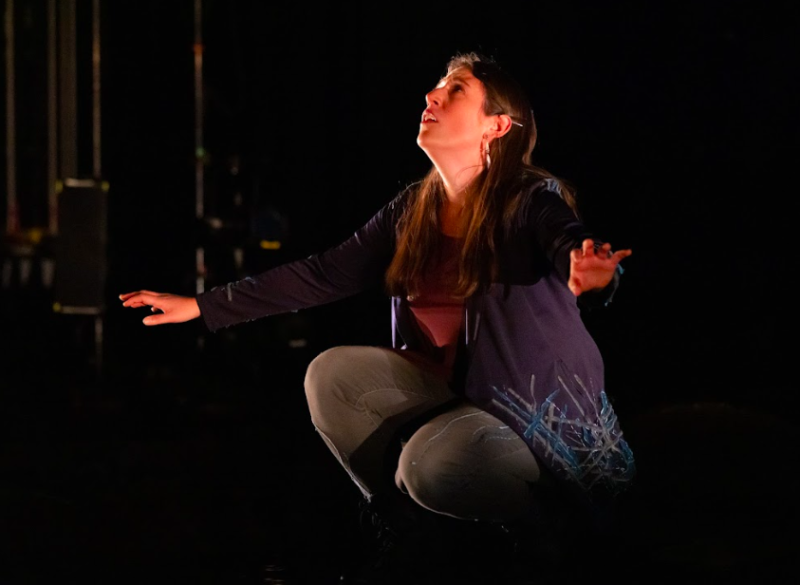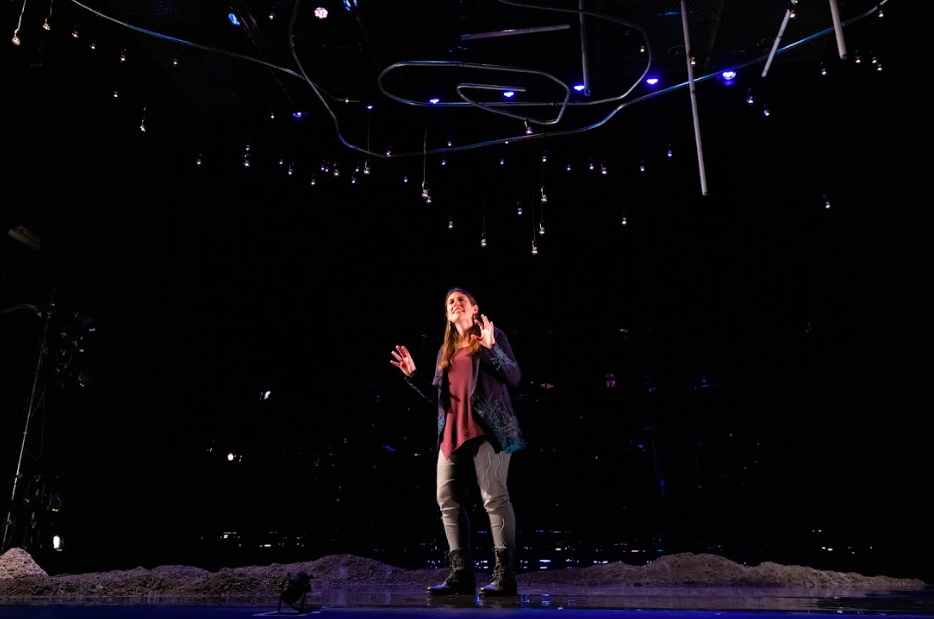Stories Like "Where We Belong" Belong on More Stages
Review of Where We Belong presented by Seattle Rep
Written by Teen Writer Anna Melomed and edited by Teen Editor Kyle Gerstel

Where We Belong is a story told by one person, but it features countless different perspectives. Meet Madeline Sayet, the playwright and performer of the piece. Her Mohegan name translates to “Blackbird” and over the course of the play, Sayet learns to soar through life. She is the daughter of the medicine woman of the Mohegan tribe, an Indigenous tribe nestled in the emerald forests of Connecticut. Her community is her family and a large part of her identity.
The audience learns that several things make up a soul: a name, a family, and a passion. A passion is an incredibly strong thing: when a person discovers their passion, it changes their life. It is a thing we can fall back on no matter what goes wrong.
Sayet’s passion is Shakespeare. As a teenager, she lets it shield her from her problems like a soft blanket. However, over time, Sayet notices that throughout Shakespeare’s plays that she adores, there is undeniable discrimination against Natives. Sayet expresses her conflicted feelings by directing a revised version of The Tempest. In The Tempest, Caliban is the only native on the island, until Prospero arrives and enslaves him. In her interpretation, she asks, “What would happen if Caliban got his language back?” To her surprise, this sparks interest in the theater world for her perspective as a Native American director/playwright. However, as she matures, she notices how discrimantion lurks within the theater industry.
Sayet shows that storytelling is the most effective way to communicate important topics. Likewise, some of the finest works of art were crafted from real world history. Where We Belong uses storytelling to dive deeper into the prejudice and alienation experienced by Indigenous people in modern society.
In the play, Sayet teaches the audience how to ask questions about belonging by touching on unseen angles of colonialism. In Washington, we often hear land acknowledgements, but very few people understand and respect Native American history. In school, we are taught about the land we live on, but many people end up forgetting or remain uneducated on the topic.
Unlike most plays, which involve flocks of actors and crew, Where We Belong uses Sayet’s words and expressions to create a story in audience members’ heads. The set was tailored to complement this through the use of a weaving line of sand. The designers include symbolism in every scenic element. For example, by simply hopping over the sand, Sayet travels thousands of miles to Britain. The sand is also used as a divide between the Mohegan tribe and the United States.

The lighting is immersive, symbolizing everything from New York’s shiny bright chaos to a bird in the middle of a thunderstorm. Sayet’s performance ties it all together, communicating complex ideas with her well-structured text and dynamic delivery. She is a phenomenal storyteller.
Overall, I found the simplicity eye-opening. On the contrary, take a musical such as Beauty and the Beast: it has showy dances of knives and forks, making it amusing, but there is very little emotional connection. Using a minimal amount of props and noise leaves a lot of space for your mind to think and process what Sayet is communicating.
I would recommend Where We Belong to anyone who loves thought-provoking theater. It is a thrilling journey of history, community, and passion. It is a play that belongs right beside Shakespeare’s masterpieces.
Where We Belong took place at Seattle Rep on September 9 – October 9, 2022. For more information see here.
Lead Photo: Madeline Sayet in Where We Belong at Philadelphia Theatre Company, directed by Mei Ann Teo. Photo Courtesy Mark Garvin.
The TeenTix Newsroom is a group of teen writers led by the Teen Editorial Staff. For each review, Newsroom writers work individually with a teen editor to polish their writing for publication. The Teen Editorial Staff is made up of 6 teens who curate the review portion of the TeenTix blog. More information about the Teen Editorial Staff can be found HERE.
The TeenTix Press Corps promotes critical thinking, communication, and information literacy through criticism and journalism practice for teens. For more information about the Press Corps program see HERE.


